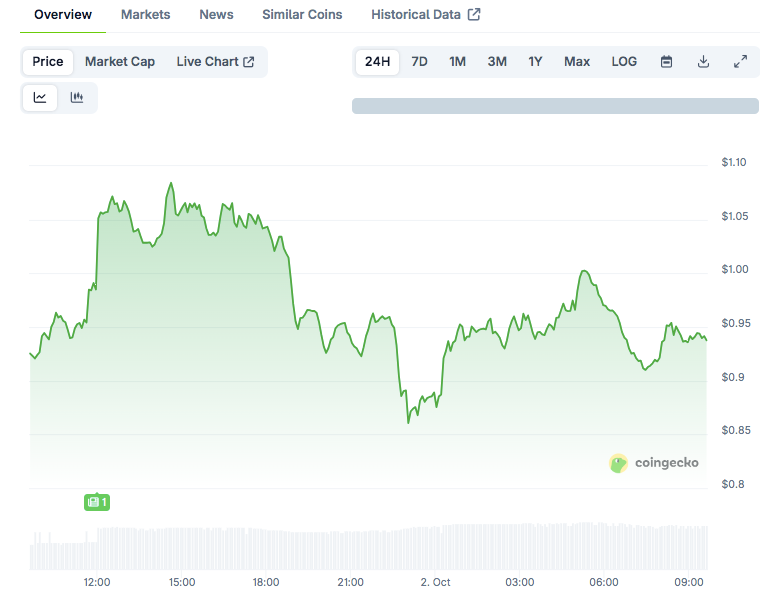TLDR:
- Plasma founder stated all XPL tokens for team and investors remain locked, countering rumors of early sell pressure
- On-chain analysis shows 85% of the top 20 traders exited XPL positions within the first week of launch
- Trading volume fell from $63.5M to $10M while price declined, a pattern analysts linked to distribution pressure
- Despite $4B TVL and backing from Tether and Bitfinex, XPL’s liquidity ratio stands at 0.09%, well below industry norms
The launch of Plasma’s XPL token has stirred excitement and skepticism. Since going live in late September, the project has been met with heavy trading, rapid price moves, and online chatter.
While community rumors grew louder, Plasma’s founder stepped in to address them directly. At the same time, market analysts have turned to on-chain data to assess what is happening behind the price chart.
Together, these responses outline two sides of a fast-moving story still unfolding for crypto investors.
Plasma Team Denies Early Sales and Market Maker Links
Paul, the founder of Plasma, issued a statement to counter claims circulating on social platforms. He said no team or investor tokens had been sold, stressing that all allocations remain locked for three years with a one-year cliff.
According to him, the team of around fifty includes backgrounds at Google, Facebook, Square, Temasek, Goldman Sachs, and Nuvei, not only former Blast staff as some rumors suggested.
Paul also rejected speculation that Plasma had engaged Wintermute as a market maker. He stated that the company had never contracted with the firm and only has access to the same information as the public about any holdings.
He explained that the team is focused on development and will not be addressing the rumors further. His closing message to the community was one of gratitude, emphasizing continued focus on building.
XPL On-Chain Data Shows Trader Exits Despite Backing
While the founder sought to calm the noise, on-chain analysis painted another picture of XPL’s early trading phase.
Market observer Cryptor analyzed activity from the token’s launch at $0.90, which rose to $1.66 in two days before falling back nearly 47 percent. Data from Nansen showed volume fell sharply during the decline, from $63.5 million in the first hours to under $10 million while the price dropped.
Cryptor tracked the top twenty profitable wallets over the first week. Seventeen of them, or 85 percent, had completely exited their XPL positions.
Only one wallet held a large stake worth $1.9 million, while smart money combined held just $27,000 out of a market cap near $1.9 billion. He suggested this flow pattern resembled distribution, where seasoned traders exit while new entrants step in.
The analysis also pointed to centralization risks and shallow liquidity. Over 70 percent of circulating tokens were concentrated in three exchange wallets, with Binance holding the largest share. Decentralized liquidity was $1.8 million, leaving a 0.09 percent liquidity ratio compared to an industry average above 1 percent.
Despite these trends, the fundamentals of Plasma remain. Backing includes Tether and Bitfinex, and reported total value locked reached over $4 billion within six days. This places it among the largest projects by stablecoin liquidity.
However, as Cryptor explained, protocol growth does not always align with token performance when early traders take profits.
XPL Price Recovers Slightly After Drop
According to data from CoinGecko, the price of XPL is $0.9472 with daily trading volume of $2.72 billion. This marks a 4.43 percent increase in the past 24 hours and growth over the past week.
While short-term data shows some recovery, the market continues to weigh the founder’s assurances against trader behavior visible on-chain.

For now, Plasma’s XPL remains a case study in how narratives and blockchain data can diverge. The founder has drawn a line under rumors, but investors still track wallets, volumes, and liquidity to decide whether to hold or step aside.





